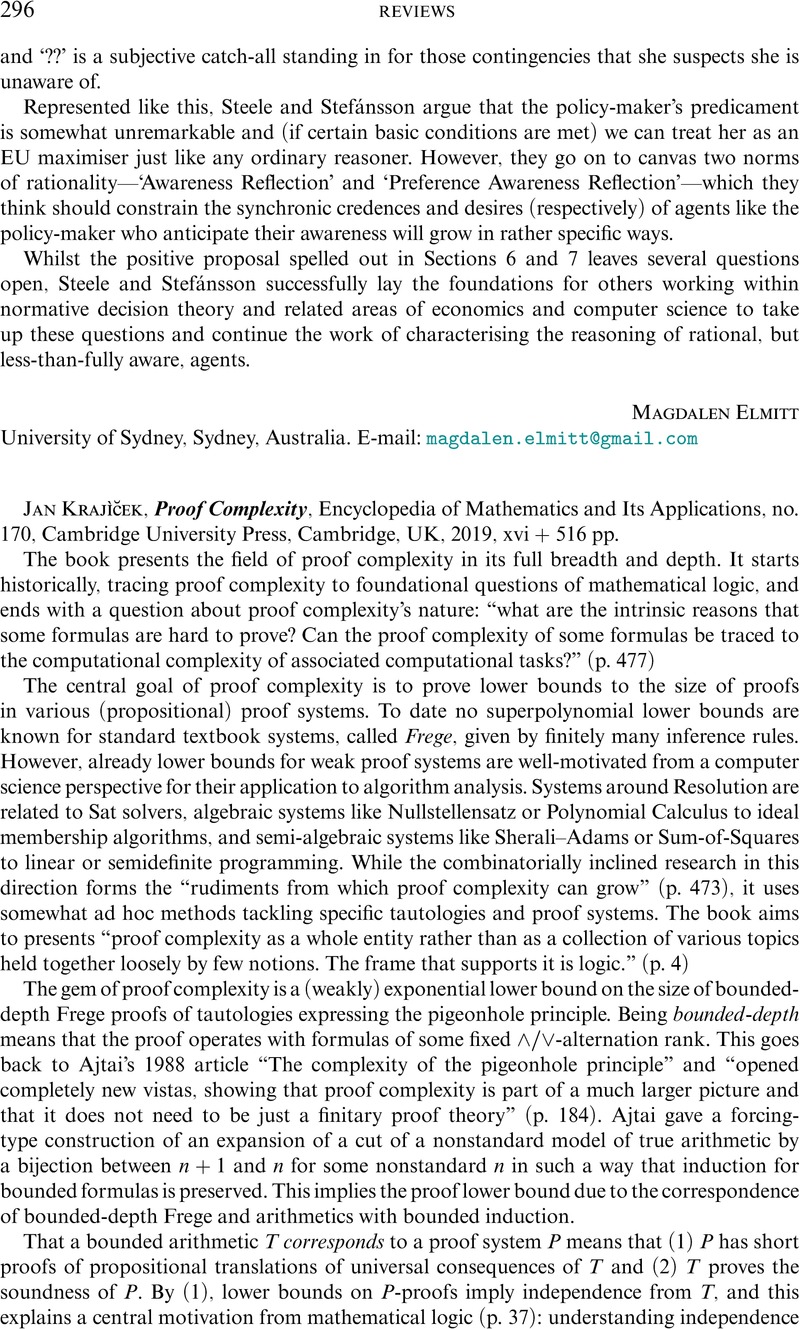No CrossRef data available.
Article contents
Jan Krajìček, Proof Complexity, Encyclopedia of Mathematics and Its Applications, no. 170, Cambridge University Press, Cambridge, UK, 2019, xvi + 516 pp.
Review products
Jan Krajìček, Proof Complexity, Encyclopedia of Mathematics and Its Applications, no. 170, Cambridge University Press, Cambridge, UK, 2019, xvi + 516 pp.
Published online by Cambridge University Press: 18 July 2023
Abstract
An abstract is not available for this content so a preview has been provided. Please use the Get access link above for information on how to access this content.

- Type
- Reviews
- Information
- Copyright
- © The Author(s), 2023. Published by Cambridge University Press on behalf of The Association for Symbolic Logic



